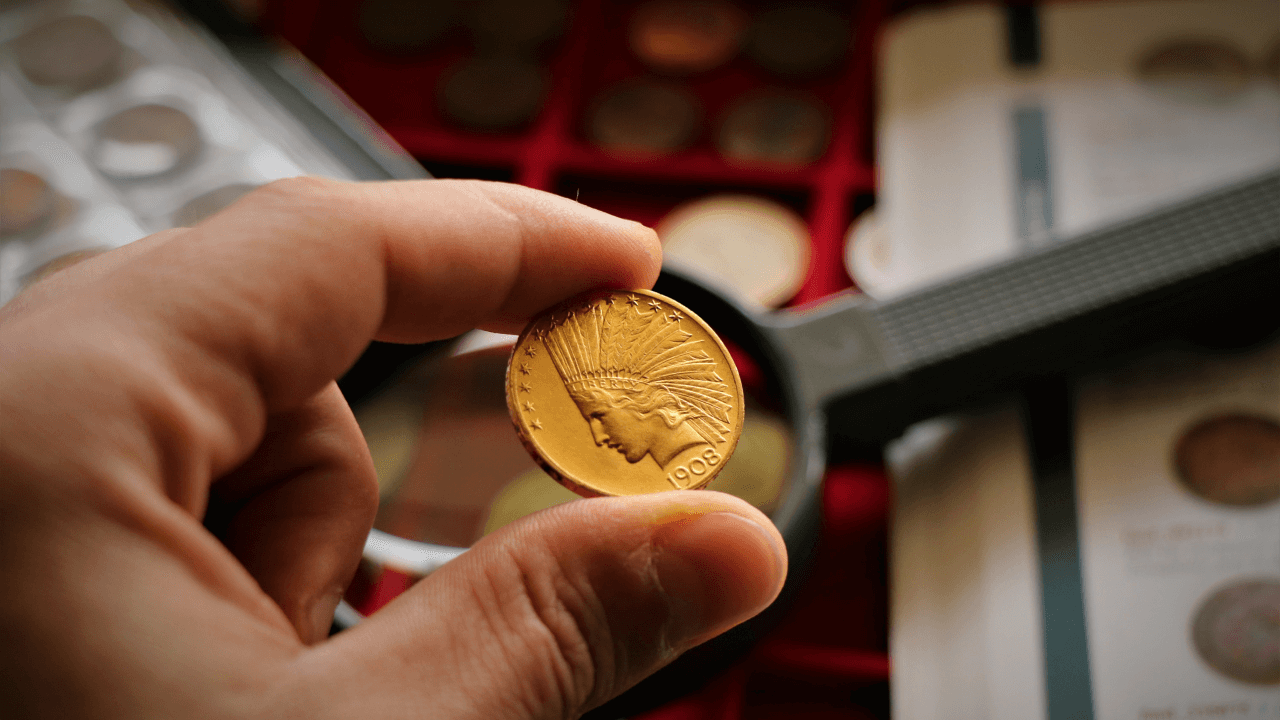What are rare coins? Are they worth a fortune? Here’s what they are and where to sell euros, lira and precious foreign coins
Rare coins are a very lucrative area of collecting. Numismatic enthusiasts are always on the lookout for the most valuable specimens. But also, for those out of the loop, it is interesting to find out which coins are the rarest; maybe a treasure is hiding in some abandoned drawer! Here are the rarest 2 and 1 euro, lira and foreign coins and where to sell them.
Rare Coins: How to understand which ones have value
How do we know which coins are rare? In the case of euros, a coin can become rare, and therefore collectable, due to several factors:
- Minting errors: the best-known case is the Italian 1-cent coin of 2002 that was printed with the wrong monument on the reverse. Instead of Castel Del Monte, this coin was minted with the Mole Antonelliana (depicted on the 2 cents instead). This error, discovered too late when the coins had already been issued, makes the coin extremely rare. Its value ranges from EUR 2,500 upwards.
- Mode of issue: some rare coins are such because the mode of distribution has made them difficult to trace. This is the case with Finland’s 2 euro commemorative coins (2004). These coins were not bundled together but scattered in the normal 2-euro ‘rolls’, like the Chocolate Factory’s golden tickets.
- The issuing state: the country that distributes the coins can also make them rare, affecting quantity and availability. Tiny Eurozone states, such as Andorra, issue them in limited numbers. Some coins are rare because they are the first issued by a country that chooses to adopt a single currency, as was the case with Slovenia in 2007.
- Commemorative coins: in the case of euros, rare commemorative coins can only be 2-euro coins (this is specified by the ECB, which, among other things, approves the maximum volume of commemorative pieces that each State can issue each year). These are more easily found in circulation and become rare only in some instances we will see later.
To understand which coins are rare, the criterion of rarity applies, i.e., the fewer specimens there are, the more valuable they are. This principle applies especially to rare antique coins that are no longer produced. It must also be specified that coins become more valuable if their state of preservation is close to the original one (‘Brilliant Uncirculated’).
Rare 2 euro coins
Let’s see which are the rarest 2-euro coins in circulation. This category mainly includes commemorative coins. Here are the most valuable ones:
- Finland 2004
This rare coin has a value of about 50 Euros; as anticipated, it is valuable because it is challenging to find. It depicts shoots growing upwards from a pillar, the first representing the new countries that joined the European Union, while the pillar is the institution itself.
- Principality of Monaco 2007
These are the rare 2 Euros of Grace Kelly, issued on the 25th anniversary of her death. This coin is precious because only 2,000 were minted. It has a value of around €2,000.
- Vatican City 2005
Rare 2-euro coins include the one issued in 2005 to celebrate World Youth Day in Cologne: This counts 100,000 examples, and its value is around €300.
- San Marino 2004
This rare 2-euro coin has 110,000 units worth between 100 and 300 euros. It depicts Bartolomeo Borghesi, an Italian historian.
- France 2019
Ranging in value from EUR 40 to EUR 100, there are rare 2-euro coins from France featuring characters from René Goscinny’s Asterix and Obelix comics.
- Slovenia 2007
Slovenia has issued 400,000 rare 2-euro coins to celebrate the 50th anniversary of the Treaties of Rome that led to the birth of the European Union. These are worth around €50. All Eurozone states minted this coin with the same image (an open book and the inscription ‘Europe’), only the inscription is in the various national languages.
Rare 2-euro non-commemorative coins, i.e. those issued routinely by Central Banks, include those of Greece 2011 (15,000), Greece 2007 (20,000), Greece 2004 (30,000), Cyprus 2013 (90,000), Cyprus 2015 (100,000).
Rare 1 euro coins
If you are looking for rare 1 euro coins, you have to consider that there are no celebratory specimens as in the case of the 2 euro. Rarity consists only of the limited edition and the year of issue. Let’s look at some examples.
- Andorra 2018: circulation 20,000
- Austria 2012: print run 60,000
- Belgium 2013: circulation 25,500
- Cyprus 2013: circulation 100,000
- Estonia 2016: circulation 20,000
- Finland 2018: print run 50,000
- France 2015: circulation 35,500
- Germany 2018: circulation 42,625
- Greece 2017: circulation 16,200
- Ireland 2016: circulation 89,000
- Latvia 2018: circulation 7,000
- Lithuania 2018: print run 5,000
- Luxembourg 2018: circulation 63,000
- Malta 2014: circulation 25,000
- Principality of Monaco 2011: circulation 7,000
- Holland 2017: circulation 47,017
- Portugal 2012: circulation 44,000
- Republic of San Marino 2016: circulation 30,400
- Slovakia 2018: circulation 17,300
- Slovenia 2018: circulation 8,750
- Vatican City 2005: print run 60,000
Rare coins: lire
Some rare coins are now out of use, like our old lire. Before rummaging through grandma’s drawers, here’s a list of those worth a fortune!
- 10 lire of 1947: depicting an olive branch and a winged horse, they can be worth up to 4,000 euros if in good condition.
- 2 Lira 1947: this coin was minted on the occasion of the signing of the peace treaty with the victorious states of the Second World War on 10 February 1947. It depicts an ear of wheat and a farmer worth about EUR 1,800.
- 1 lira of 1947: This rare coin depicts an orange branch and a woman with a crown of spikes. It is one of the rarest pieces, with a value of over 1,500 euros.
- 50 lire of 1958: depicting the god Vulcan working with metal and the inscription ‘Repvbblica italiana’, it was minted in 800,000 examples. It is worth up to 2,000 euros.
Generally speaking, the most valuable lire are those minted between the 1940s and 1950s; to be sure of their value, it is necessary to rely on expert advice.
The world’s rarest coins
Even among foreigners, there are rare coins worth staggering sums:
- Flowing Hair Silver Dollar: this is a 1794 dollar that has reached a valuation of $10 million. It is valuable because it was the first coin the US federal government issued in the first mint in Philadelphia.
- Double Eagle: another dollar with an incredible history. In 1933, President Roosevelt ordered the destruction of the gold series of that year, which had 445,000 units. Ten units, however, were not disposed of by the Secret Service over the years, but managed to track down all of them. The last one was owned by King Farouk of Egypt and was auctioned for $7.6 million.
- Brasher Doubloon: this coin was privately minted in 1787 by goldsmith Ephraim Brasher. It was purchased in 2011 for $7.4 million.
- Edward III: There are only an estimated three copies of this ancient coin worldwide; one sold for $6.8 million. It was a gold coin used between 1343 and 1344.
- Gold Dinar: an ancient gold coin issued by an Arab caliph of the Umayyad dynasty around 700. The Gold Dinar is made of 4.75 grams of gold and was sold in 2011 for $6 million.
- Liberty Head Nickel: a 1913 US 5-cent coin minted ‘clandestinely’. There are only five examples globally, three of which are privately owned. In 2018, one was sold for $4.5 million.
- Queen Elizabeth II: A gold pound sold at auction for $4 million, depicting Queen Elizabeth II Queen from 1953 to 2022.
- Queller’s dollar is an 1835 silver dollar from the Queller’s collection, sold in 2008 for $3.7 million.
Rare Coins: Where to Sell?
After this overview, the question arises: Where do you buy or sell rare coins? If you are an expert and are familiar with the ones you have in your hands, getting by might be the best solution, which is why it is helpful to frequent flea markets or specialised online marketplaces. Copies can also be found on eBay, where you should beware of scams. If, on the other hand, you are wondering where to sell rare coins as a beginner, the best choice is to rely on professionals such as numismatic shops or auction houses, which are also online (such as Catawiki).



